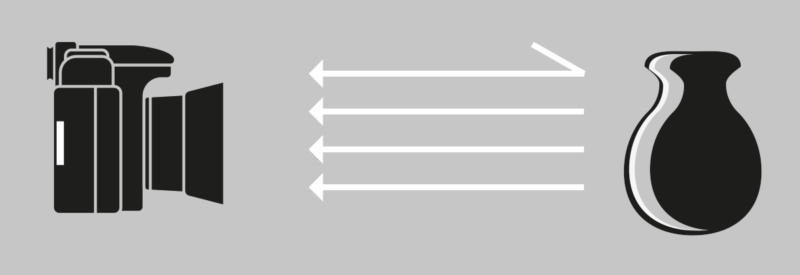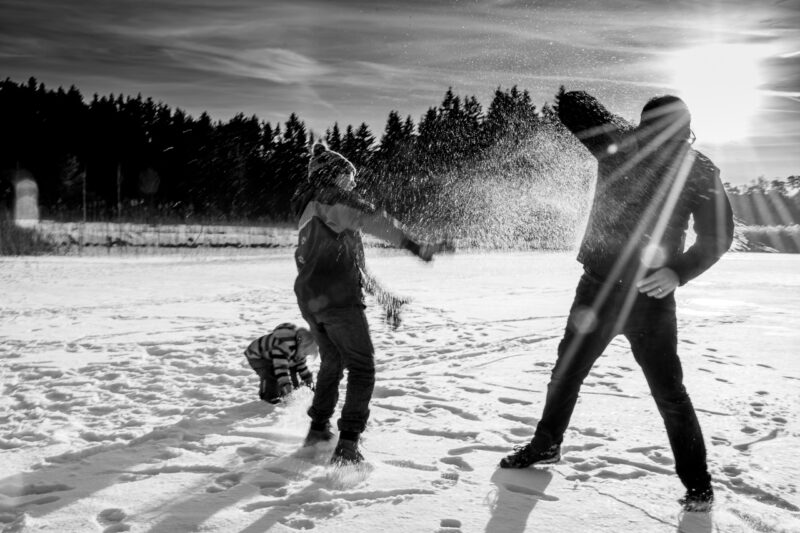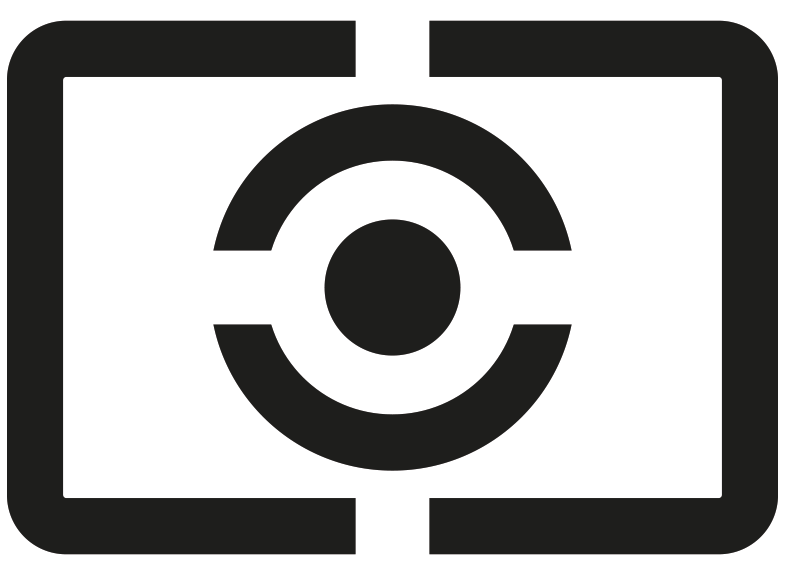Before I go into the different metering methods, I would like to briefly explain what actually happens during exposure metering, what is measured there and why this is important.
It is obvious that light is measured during exposure metering, but what kind of light it is is more interesting.
There are two types of light that we can measure. One is the light that hits an object(light measurement), and the other is the light that is reflected by the object(object measurement).
With light measurement, I get a more precise result because it shows me exactly how much light falls on an object. Cameras can only measure the light that is reflected by an object and that’s where things start to get a little more complicated.

Light measurement. With light measurement, the light that falls on an object is measured. This measurement method provides a more accurate result as it is independent of the reflection behavior of the object.

Object measurement. Object metering measures the light that is reflected by an object. As the camera always assumes a medium gray during a measurement, the result must be corrected in some cases.
The light meter always assumes that the light hits 18% gray. In most cases, this is also a very good average value. It becomes more difficult if you want to photograph a black mole on a pile of coal. The pile of coal and the mole are black. However, the camera assumes that the subject is somehow a medium gray. As a result, the image is overexposed.
Another case that you have certainly encountered is photos in very bright surroundings, e.g. a snowy landscape. The snow hare on the ski slope overtaxes the camera in exactly the same way, because it doesn’t know that the surroundings are white – so the subject is clearly underexposed.

Difficult lighting conditions. White snow and backlighting.
Despite this apparent inadequacy in object metering, this is the method we use when measuring exposure with a camera. With the exception of extreme lighting situations, it works very well.
Measuring methods of a camera
There are 3 fundamentally different metering methods, and most cameras are capable of all of them. To say it up front – there is no perfect metering method. As already described, exposure metering depends on many factors and every photographer develops their own preferences over time. Personally, I alternate between multi-segment metering and spot metering, depending on where I’m shooting.

Multi-field or matrix measurement
With multi-segment metering, the exposure is determined using many different metering fields. Some camera models use over 1000 metering points for this. In addition to the brightness distribution, the color distribution, the object distance and the focal length of the lens are also taken into account, depending on the camera.

Centered
As the most important subjects are often located in the center of the image, the middle area is weighted more heavily than the edge areas in this measurement. Depending on the camera, this area can be enlarged or reduced.

Spot measurement
With spot metering, only a small, narrowly defined area is taken into account for the exposure. This area is often coupled with the AF (autofocus). This metering method is particularly helpful in extreme lighting conditions, e.g. at concerts.
